-
Edinburgh botanical gardens
 Lee Burkhill: Award Winning Designer & BBC 1's Garden Rescue Presenters Official Blog
Lee Burkhill: Award Winning Designer & BBC 1's Garden Rescue Presenters Official Blog

Regardless of the weather; its variety of both terrain, wildlife and botany is something that always draws me back to Scotland whenever I can. Scotland, especially the highlands, can be a place of extremes which can give a garden designer such as myself some brilliant inspiration. Brutal winds whip up dried leaves, waves crash on the shore lines exposing bright white pebbles, rain can bring small streams to gushing torrents all of which asserts mother nature’s dominance on the land.
Whilst I would never claim that Edinburgh suffers the same weather conditions as the highlands; the biting cold can still be felt as can the pretty soggy conditions, so I believe the analogy is still worthwhile.
Whereas many horticulturists may tend to hibernate from outdoor gardens in the colder months, I’m here to shake up that view! The Edinburgh Botanical Gardens can give a welcome break from these conditions and even given you a feel of the tropics in the 10 warm glass houses which burst with flora and lush vegetation during the winter. So dust off your pajamas, walking boots at the ready and let’s take a walk on the warm side!
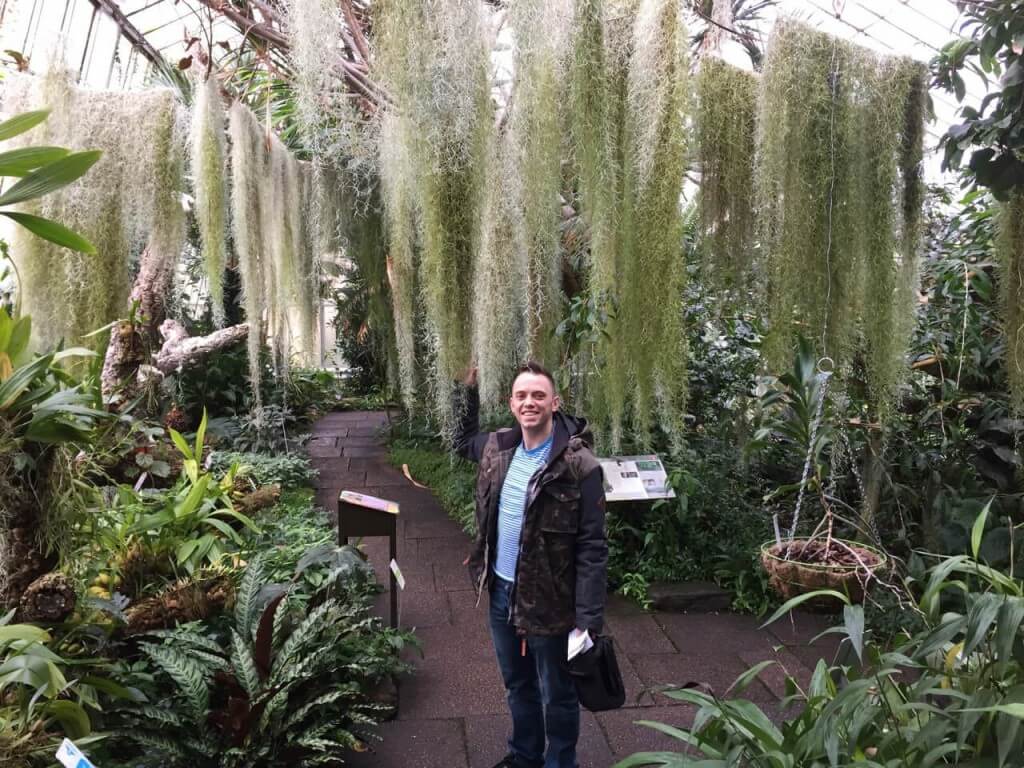
The glass houses within the gardens are the perfect escape from the cold and wet winter weather. They are fully connected and make for a warm, sometimes humid, break from the weather outside. It’s fully accessible with automated doors which means that anyone can enjoy them.
The glass houses themselves showcase many different construction eras. The main glass house is of the Regency era, also clumsily referred to as the pre-Victorian construction. The main glass house housed the tropical palms and is seen in the main image to this post. It is one of the highest of its kind at 23 meters tall and has a pretty spectacular tiered glass dome. Sadly the 200-year-old palm had to be felled recently but there’s plenty of other old tall contenders. The other more modern glass houses here were built in 1967 and utilise some pretty retro looking wire supports on the outside, very Atomic age in style.
My guide here is to give you some of the best gems within these glass houses, to make that drab winter day something much more tropical!
The Aquarium glass house is one of my favourite must-sees as I’ve been fond of ponds and aquatic plants. The fact that many aquatic plants have become specialised to deal with being in waterlogged conditions where most plant roots would simply rot and die has fascinated me since being young. I built my first pond when I was 10 with my grandad and have had a pond or water feature in every garden I’ve owned since.
The pond in this glasshouse pretty much sprawls over the entire footprint of this garden with a walkway around its edges. There’s some interesting glass sculpture contained within it and plenty of inquisitive fish to see that rush up to the shore line to greet you. You really could be in the rivers of deepest Kerala or somewhere in the Malaysian forests when walking around the aquarium.
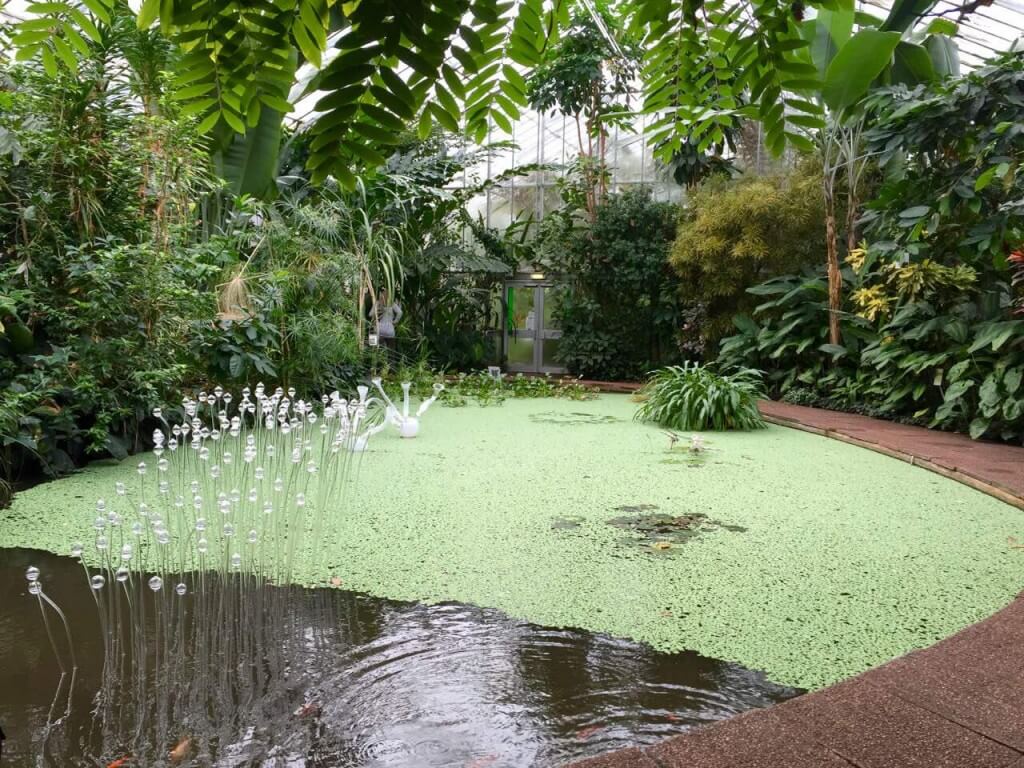
In the summer, they showcase Victoria amazonica huge lily pads which kind of take your breath away with their size and scale. They look like those round tin tea trays you used to see in corner cafes. Unfortunately, in the winter these are dormant but the sculpture and surrounding foliage helps make up for it. Have a look at the brightly variegated plants in the aquarium neon purples, pinks, oranges and greens can create a real wow factor and there are some gems in here! This is a great design idea that can be applied to a conservatory or house plant situation. Variegated plants can provide a real show piece to any garden design.
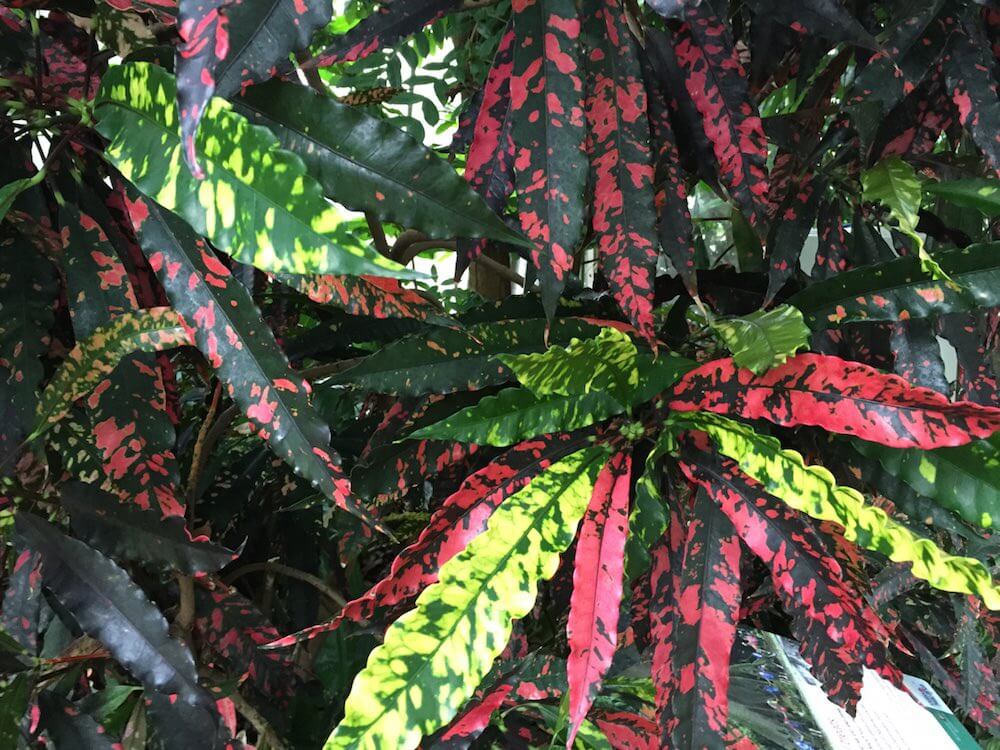
The Rainforest Riches House has a must not miss plant variety known as the ‘Powder Puff’ tree, known formally as Calliandra haematocephala. This bright red pom pom flower is definitely worth hunting down, in fact, you probably can’t miss it given its bright red colour. It reminds me of bobble hats in the winter and with its vivid colour gives the feeling of heat very effectively!
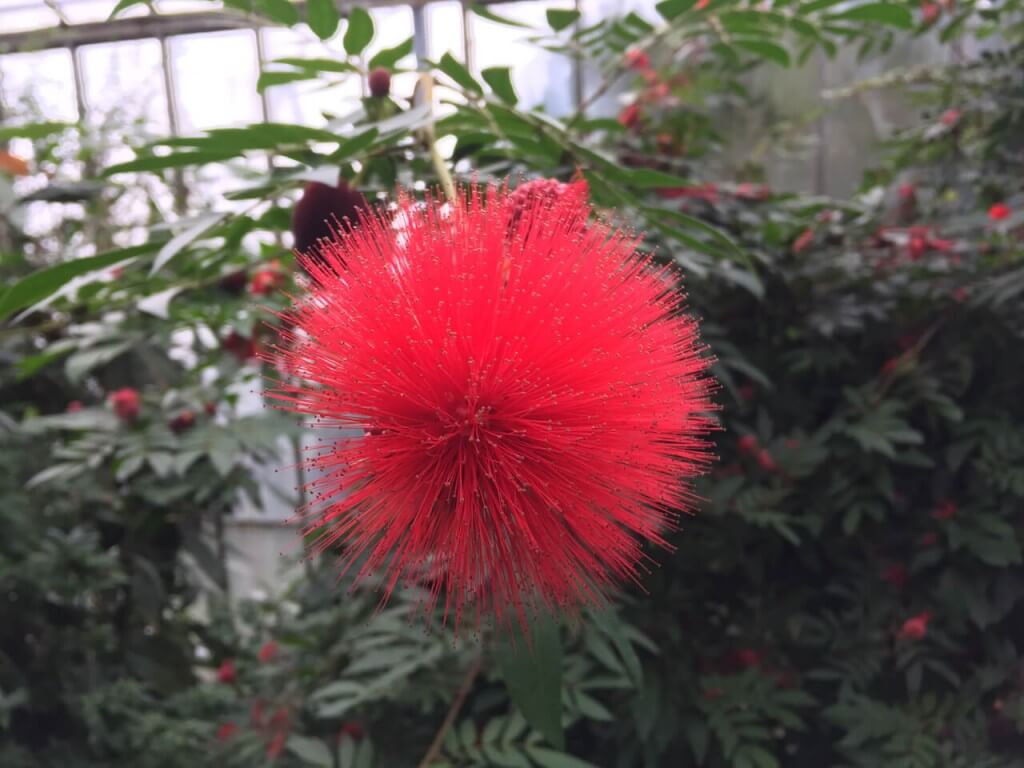
The ferns and fossils glasshouse will appeal to anyone who likes that fairy glen or woodland look in a garden. The kind with pools, mossy rocks and ferns providing a fuzzy cover to soften edges. Now ferns get a bit of a bad wrap in garden design. They are either thought of as a bit of a 1980’s conservatory or porch plant throw back or prolific propagators that ravage gardens, which I suppose can be true to some degree.
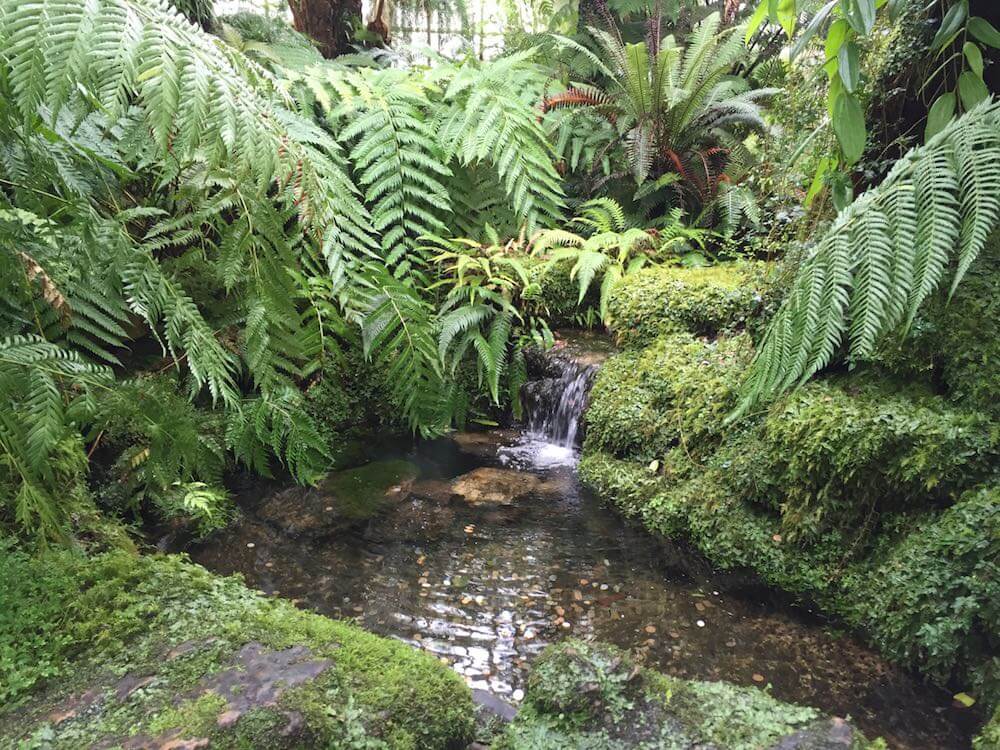
However, ferns should not be slapped in the face so readily! They are some of the oldest surviving plants on the planet, their simple water transport system and spore propagation method has meant they became the true terminator of plants evolving further than say the early plants before them, mainly mosses.
Having survived the trampling of dinosaurs, that meteor that then made them extinct, climate change, volcanoes, the ravages of man’s increasing push to colonise and tarmac the planet to name a few they are pretty resilient! They can be used appropriately in a garden and a number of them are perennial meaning year round colour. With some maintenance you can keep on top of their promiscuity. They will live in the most frugal of conditions and can accommodate the most awkward dark damp corners. Mixing ferns with some more architectural plants such as Phormiums can create a really lush contemporary look.
So here’s raising a glass to ferns, maybe the designers that turn their nose up are just jealous that they didn’t survive a meteorite!
The Cactus Arid Glasshouse is as close to a desert as you will find in Edinburgh with its rocky outcrops and drought tolerant planting. This reminds me of the current issue in California with drought and the super-rich millionaire mansions that are built up in the hills. They have been heavily criticised for over use of water for non-essential means, that would be gardens that could never sustain themselves without human water intervention. Thus creating a water shortage in keeping turf and lush vegetative planting alive during their harsh summers.
There is now a movement away from sprinkler systems, using thousands of gallons to keep the impossible lush grass alive in such a hot and dry environment, to more drought tolerant gardens. I’ve read about completely sprinkler-free gardens being designed out there with similar plants to cacti and succulents that have water retentive leaves to reduce their water loss, hence they can survive extended periods of drought.
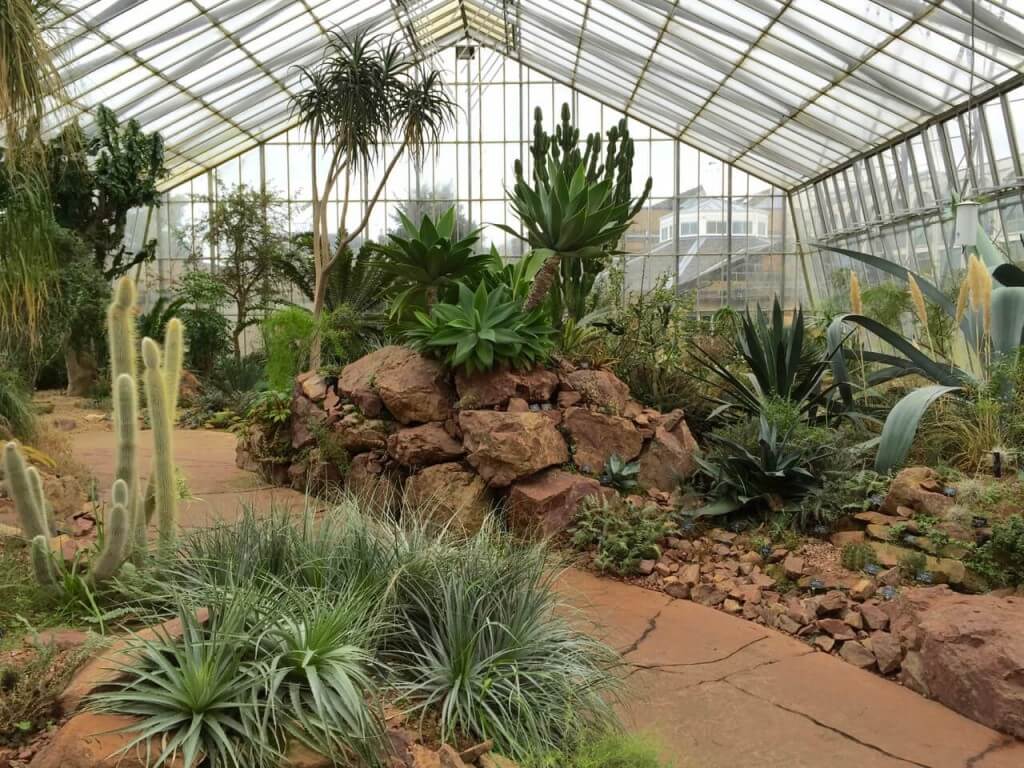
I can’t single out anyone Cacti or plant specimen here to see, as I think the greenhouse is best taken as a whole. It’s really remarkable how harsh dry conditions can be made to look so favourable by the correct planting choice. Take heed Californians!
Edinburgh’s Botanical Gardens are renowned as one of the best botanic gardens in the world. It takes up some 70 acres of the city, sitting in Leith just north of the main tourist attractions of Edinburgh. It’s not just the sheer size of it but the breadth of planting styles and types that helps it lay its claim as one of the best botanic gardens in the world!
There is a huge amount to see here and the great news is that it’s free to enter the main grounds of the gardens. Don’t let the scale and size put you off the gardens are separated into distinct areas such as the Rock garden, native woodland or the modern visitor centre situated at the main entrance.
Grab a map from any of the entrances or simply go explore you can’t really get too lost here. There are plenty of map stations and signs to give you an idea of which direction you are heading.
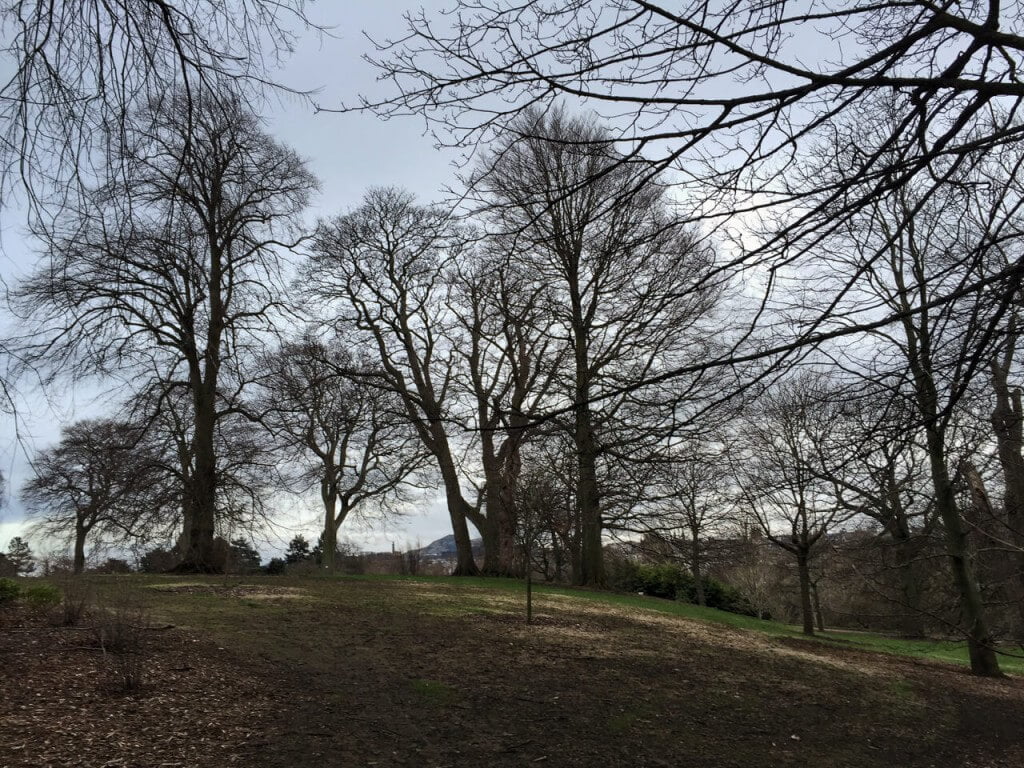
Even in these winter months, the garden has plenty to see and do. I’ll admit you’re not going to be able to see copious flowers or green leaves swaying in the breeze, but on a dry day, the main gardens are a real treat for a relaxed walk around. Even the deciduous trees and their skeleton branches provide a really startling backdrop from the garden when over looking the city.
In fact, the view from the Terrace Cafe gives probably one of the best views of the city of Edinburgh which is situated just further up to the left of the trees shown above. Just letting the world go by as you uncover some of the more interesting specimens or a nice cup of tea. How perfectly British or is that Scottish?!
Acer griseum is a specimen found near the main glass house, the top left of the visitor map, which you shouldn’t miss. The paper bark maple tree with its peeling bark gives a real contrast to the wintery months. This Acer gives a warm orange glow to the otherwise darker surroundings as the bark peels off. It’s a tree that can be grown pretty much anywhere and is relatively fuss-free. Who needs the sun when there’s such a sight!
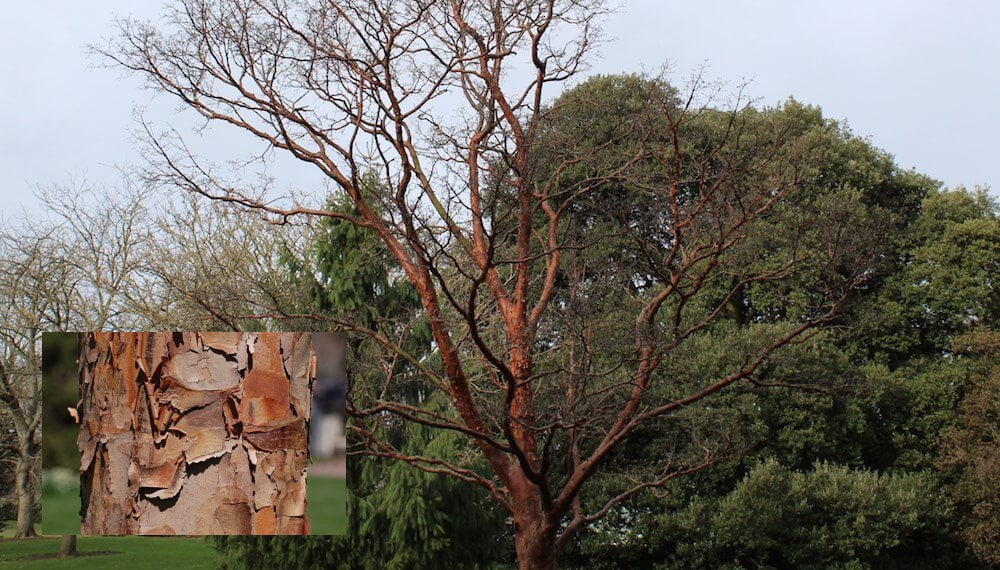
The Gunnera manicata which dies back each winter is still one of the most interesting sights in the garden with the way the team use the old leaves to protect its crown. These can be found top right of the visitor map near the east entrance. It looks very alien like in this state but just shows how inventive you can be with overwintering plants. I think they look like collapsed tents from some form of a wild music festival.
You don’t always need to lift and fleece plants, nature sometimes provides you with the answer! Using environmentally friendly means of gardening is always preferred to synthetic or man-made equivalents. This is also great for wildlife with nutrients from the leaf matter re-entering the soil as the crowns decompose down into the soil.

Now I’m not saying for one minute that the intricate glasshouses are something that you could easily add to your back garden. In fact I’d actually advise against it given the maintenance, cost and attention to detail you would need. Could you imagine keeping mould, fungus and potential humidity based infectious spores at bay?! That and ensuring you mimic the seasonal changes these plants would require to keep flowering and survive? How exhausting!
Nothing short of a botanist could keep the conditions optimal for such an array of plants. However, the principles of certain plant groups within the glass houses can be easily adapted to say a conservatory or summer house. It’s about taking inspiration and knowledge from the glasshouses to make them work on a smaller scale for you! There are plenty of hardy plants that can look tropical but actually be perfectly suited to our more temperate UK climate.
Two key ideas to think about are:
I’d love to hear from you about your use of ferns, variegated plants or tropical specimens in your gardens. Drop me a comment below and I’ll respond to you. If you’re looking for a tropical feel why not get in touch for a garden design or planting plan with plants to give the look of this in your garden but without the need of a glass house?

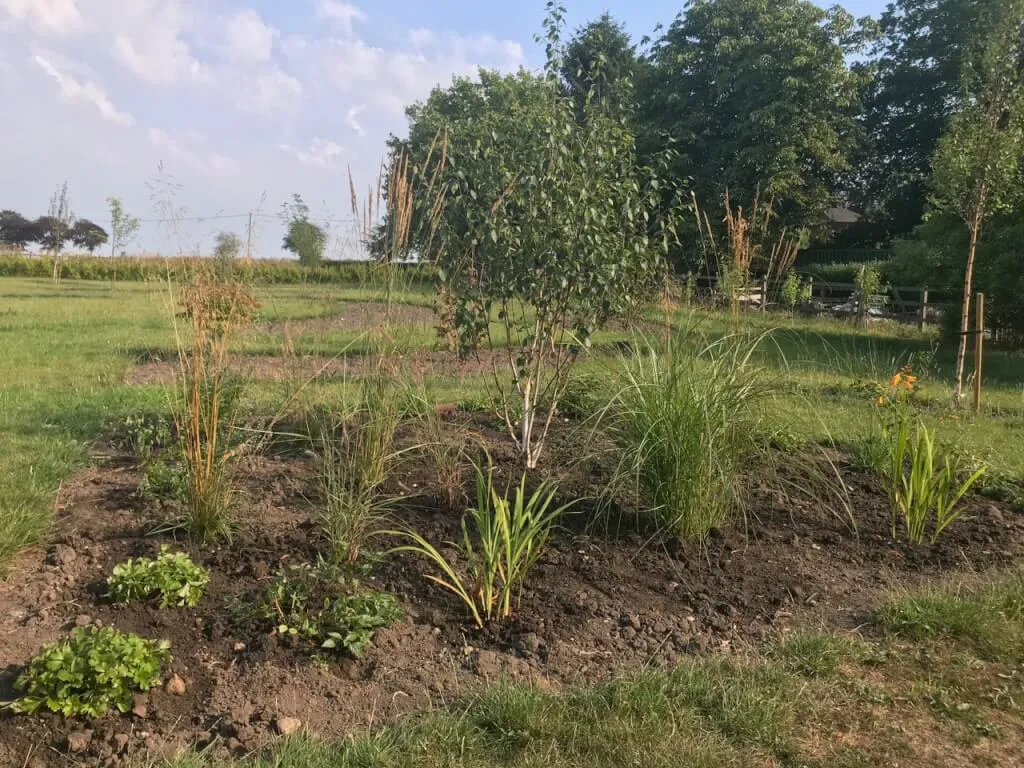
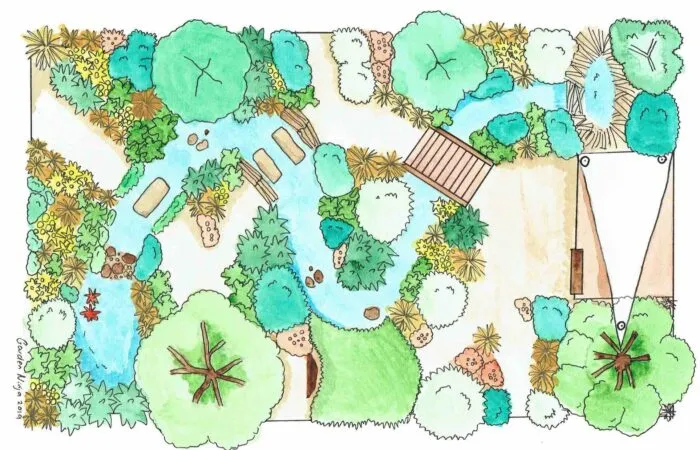
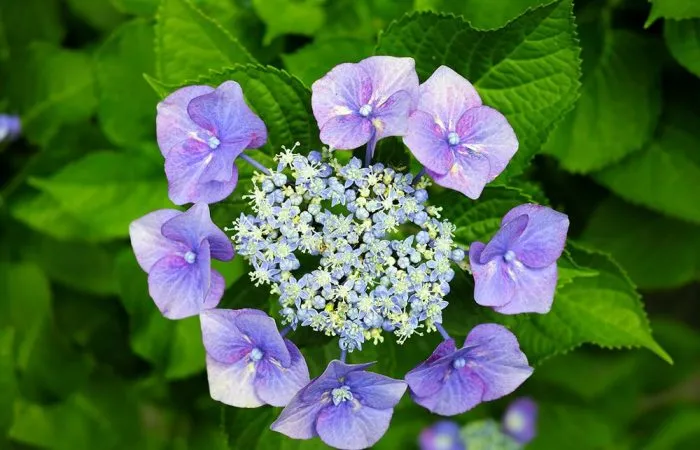
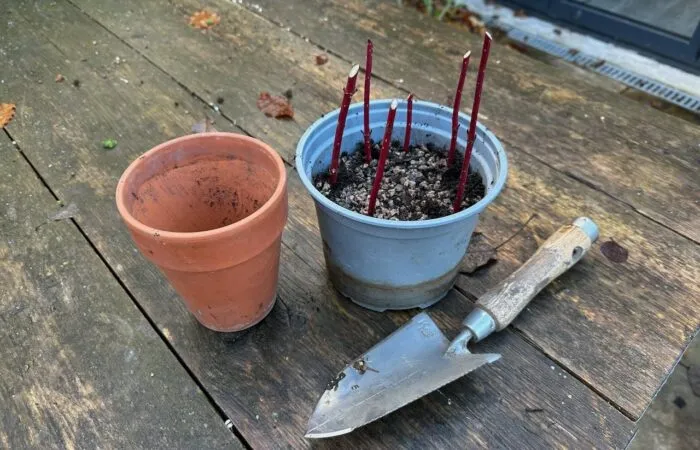

JOIN THE NINJAS

Be the first in line for new Guides, Discount codes and Offers